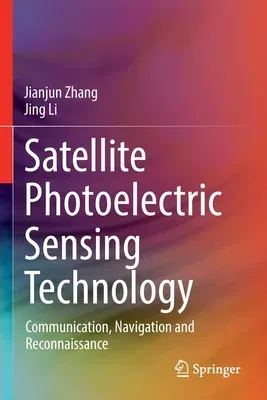Jianjun Zhang
(Author)Satellite Photoelectric Sensing Technology: Communication, Navigation and Reconnaissance (2022)Paperback - 2022, 2 December 2022

Qty
1
Turbo
Ships in 2 - 3 days
In Stock
Free Delivery
Cash on Delivery
15 Days
Free Returns
Secure Checkout

Print Length
160 pages
Language
English
Publisher
Springer
Date Published
2 Dec 2022
ISBN-10
3030898458
ISBN-13
9783030898458
Description
Product Details
Authors:
Book Edition:
2022
Book Format:
Paperback
Country of Origin:
NL
Date Published:
2 December 2022
Dimensions:
23.39 x
15.6 x
0.94 cm
ISBN-10:
3030898458
ISBN-13:
9783030898458
Language:
English
Location:
Cham
Pages:
160
Publisher:
Weight:
254.01 gm